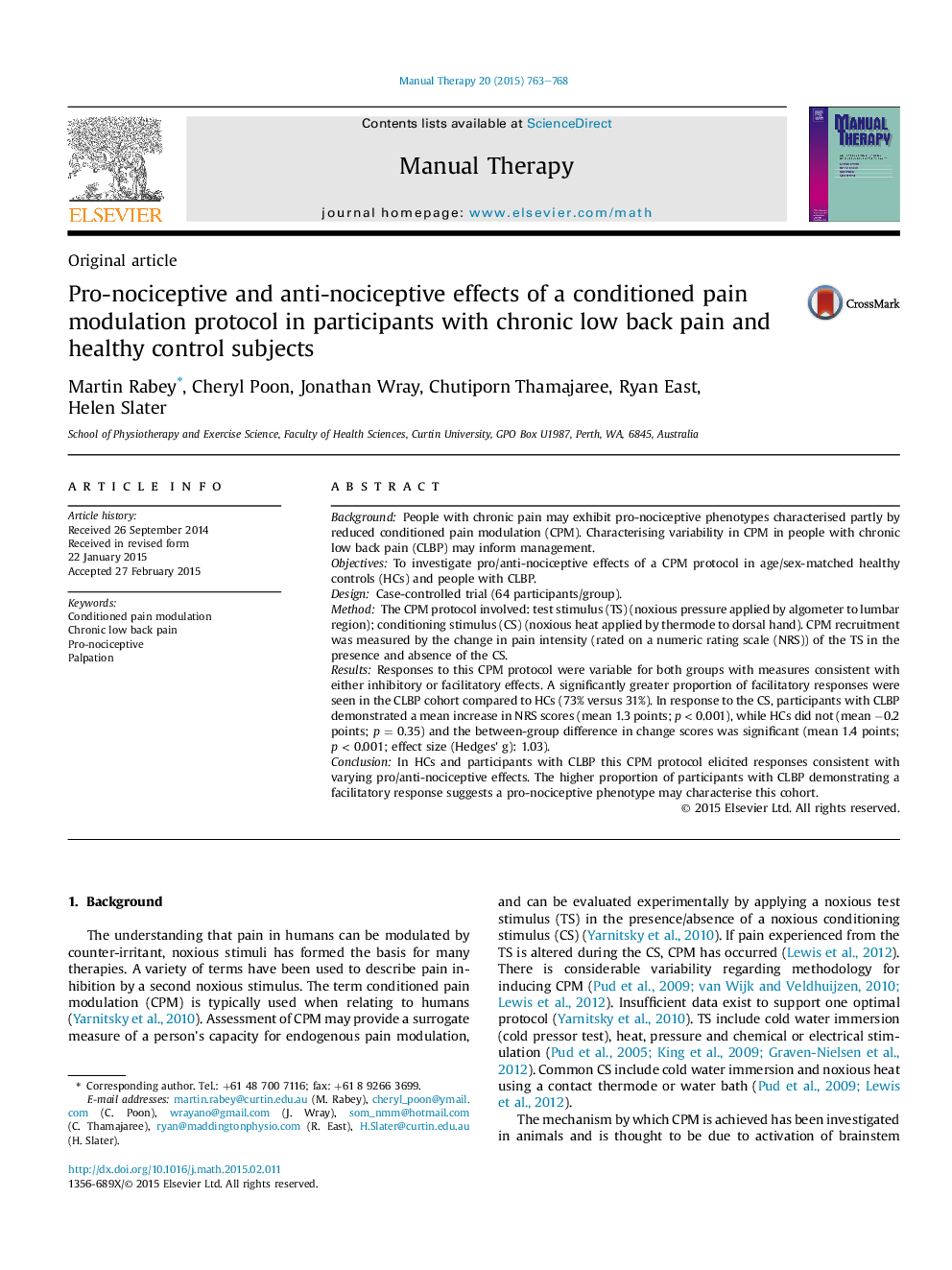| کد مقاله | کد نشریه | سال انتشار | مقاله انگلیسی | نسخه تمام متن |
|---|---|---|---|---|
| 2624750 | 1563098 | 2015 | 6 صفحه PDF | دانلود رایگان |
• CPM responses vary from facilitatory to inhibitory in controls and people with LBP.
• 73% of people with LBP show facilitatory responses to CPM testing.
• 69% of healthy controls do not show facilitatory responses to CPM testing.
BackgroundPeople with chronic pain may exhibit pro-nociceptive phenotypes characterised partly by reduced conditioned pain modulation (CPM). Characterising variability in CPM in people with chronic low back pain (CLBP) may inform management.ObjectivesTo investigate pro/anti-nociceptive effects of a CPM protocol in age/sex-matched healthy controls (HCs) and people with CLBP.DesignCase-controlled trial (64 participants/group).MethodThe CPM protocol involved: test stimulus (TS) (noxious pressure applied by algometer to lumbar region); conditioning stimulus (CS) (noxious heat applied by thermode to dorsal hand). CPM recruitment was measured by the change in pain intensity (rated on a numeric rating scale (NRS)) of the TS in the presence and absence of the CS.ResultsResponses to this CPM protocol were variable for both groups with measures consistent with either inhibitory or facilitatory effects. A significantly greater proportion of facilitatory responses were seen in the CLBP cohort compared to HCs (73% versus 31%). In response to the CS, participants with CLBP demonstrated a mean increase in NRS scores (mean 1.3 points; p < 0.001), while HCs did not (mean −0.2 points; p = 0.35) and the between-group difference in change scores was significant (mean 1.4 points; p < 0.001; effect size (Hedges' g): 1.03).ConclusionIn HCs and participants with CLBP this CPM protocol elicited responses consistent with varying pro/anti-nociceptive effects. The higher proportion of participants with CLBP demonstrating a facilitatory response suggests a pro-nociceptive phenotype may characterise this cohort.
Journal: Manual Therapy - Volume 20, Issue 6, December 2015, Pages 763–768
